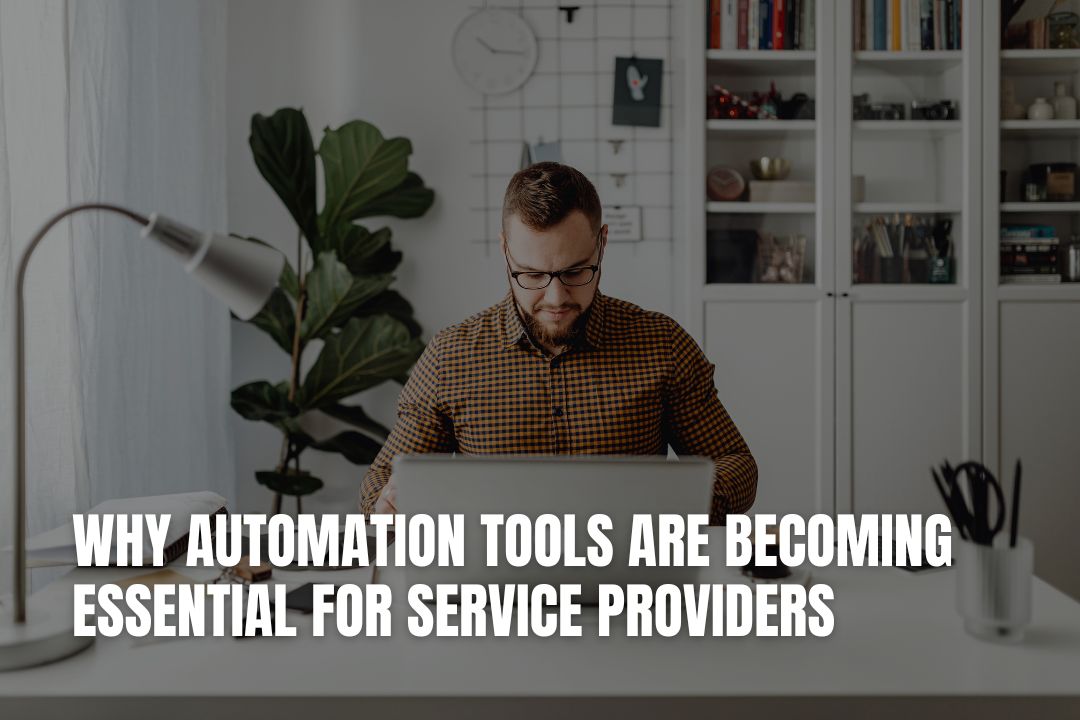
Clients move fast, and they expect responsive service, accurate invoices, and clear timelines. Teams that still juggle spreadsheets, manual approvals, and email threads lose time they could spend on value-adding work. Automation shifts that balance. It standardizes repeatable steps, creates reliable handoffs, and frees talent to focus on outcomes that matter.

Clients move fast, and they expect responsive service, accurate invoices, and clear timelines. Teams that still juggle spreadsheets, manual approvals, and email threads lose time they could spend on value-adding work. Automation shifts that balance. It standardizes repeatable steps, creates reliable handoffs, and frees talent to focus on outcomes that matter.
Service businesses live on reputation and repeat work. Missed follow-ups, slow quotes, and billing delays erode trust and squeeze margins. Automation helps teams create consistent experiences from the first touch to the final invoice. Quote templates, auto-generated statements of work, and scheduled reminders keep momentum. When the system handles status updates and nudges, account managers can invest time in strategy and relationship building. Leaders then see steadier pipelines, fewer last-minute scrambles, and a smoother path from sales to delivery.
Repetitive tasks drain attention and energy. A recent survey found that more than 40% of workers spend at least a quarter of their week on manual, repetitive tasks, and nearly 70% see automation as the best way to cut that waste. This drag hurts utilization and morale. Teams gain real capacity when they replace copy-paste routines with automated workflows. The right stack can route approvals, prefill forms from CRM data, and post updates to project channels. Many finance groups go further with an invoice presentment and taxation engine that syncs client data, applies jurisdictional rules, and reduces rework. The payoff shows up in more billable hours, faster cycle times, and fewer end-of-month fire drills.
Cash flow keeps every service firm healthy. Late invoices and small mistakes slow payments and create write-offs. Automation tightens this loop. Systems can validate purchase order numbers, check contract terms, and flag mismatches before invoices go out. Smart collections sequence schedule reminders, escalate to account owners at the right moment, and log every touchpoint. Teams that adopt these patterns see shorter days' sales outstanding, steadier inflows, and cleaner audits. Clients appreciate accurate bills and predictable schedules, which strengthen long-term relationships.
Service providers often work across regions and industries with different rules. Manual tracking increases risk. Automated audit trails record who did what, when, and why. Field-level histories make reviews faster, and centralized logs reduce scrambling during vendor assessments. Real-time dashboards pull data from CRM, PSA, and accounting software so leaders can spot scope creep, margin slippage, and at-risk milestones early. With clear metrics on utilization, burn rate, and change requests, teams make quicker calls and prevent small issues from turning into missed deliverables.
New clients and new hires both need quick ramps. Automation packages playbooks into step-by-step flows. Intake forms map to project templates, tasks appear with owners and dates, and standard documents populate with client variables. This cuts onboarding time and reduces handoff gaps. Delivery teams get consistent checklists for discovery, kickoff, and acceptance. When a process changes, operations update one template, and the improvement rolls out to every future engagement. That creates a feedback loop where each project makes the next one smoother.
Tools assist; people lead. The highest-performing firms keep experts in the loop for nuanced calls like scope changes, exception pricing, and risk review. Automation handles preparation: gathering artifacts, structuring comparisons, and surfacing edge cases. Specialists then apply judgment, confirm next steps, and communicate decisions with clarity. This partnership raises quality without slowing momentum. Teams feel supported rather than replaced, and clients see faster answers backed by solid rationale.
Chasing every shiny product leads to overlap and confusion. Start with the core journey: marketing to sales, sales to delivery, delivery to billing, billing to collections, and renewals. Map the exact points where work stalls or errors appear. Choose tools that integrate with your PSA, CRM, and accounting system, and confirm they support your permissions model. Favor a clear configuration over heavy customization. Run a pilot in one team, measure cycle time, error rate, and cash flow impact, and iterate based on hard numbers. A focused plan beats a crowded toolbox.
Clients rarely ask about your tech stack, but they feel the results. Faster proposals, cleaner SOWs, precise invoices, and consistent updates build confidence. Your team gains hours each week, leaders get reliable forecasts, and projects stay aligned with business goals. Small improvements compound into a service experience that keeps clients returning and referring new work.

Automation pays off when it targets the moments that slow your team and frustrate your clients. Streamlined approvals, accurate billing, strong audit trails, and real-time visibility create a service engine that runs smoothly. The result is more focused talent, healthier margins, and clients who stay with you for the long run.
Automation improves client relationships by ensuring consistency and responsiveness. When your systems handle routine updates, generate accurate invoices, and produce timely proposals, clients see your service as reliable and professional. This frees up your team to focus on strategic conversations and building stronger partnerships.
The goal of automation is not to replace people but to support them. It takes over the repetitive, low-value tasks that drain time and energy. This allows your talented team members to focus on more complex problem-solving, creative strategy, and client-facing work where their expertise truly shines.
Begin by mapping your core processes, such as sales-to-delivery or billing-to-collections. Identify the specific points where work slows down or errors frequently occur. Targeting these bottlenecks first will give you the most significant and immediate impact on your efficiency and cash flow.
Focus on tools that integrate smoothly with your existing core systems like your CRM and accounting software. Instead of chasing many different products, select a few that solve your biggest challenges. It's often best to start with a pilot programme for one team to measure the results before rolling it out more widely. Solutions from providers like Beacon Inside often focus on seamless integration.
Absolutely. Automation is valuable for businesses of all sizes. For smaller firms, it levels the playing field by enabling you to deliver a highly professional and consistent service without a large administrative team. It helps you manage growth, maintain healthy margins, and compete effectively.